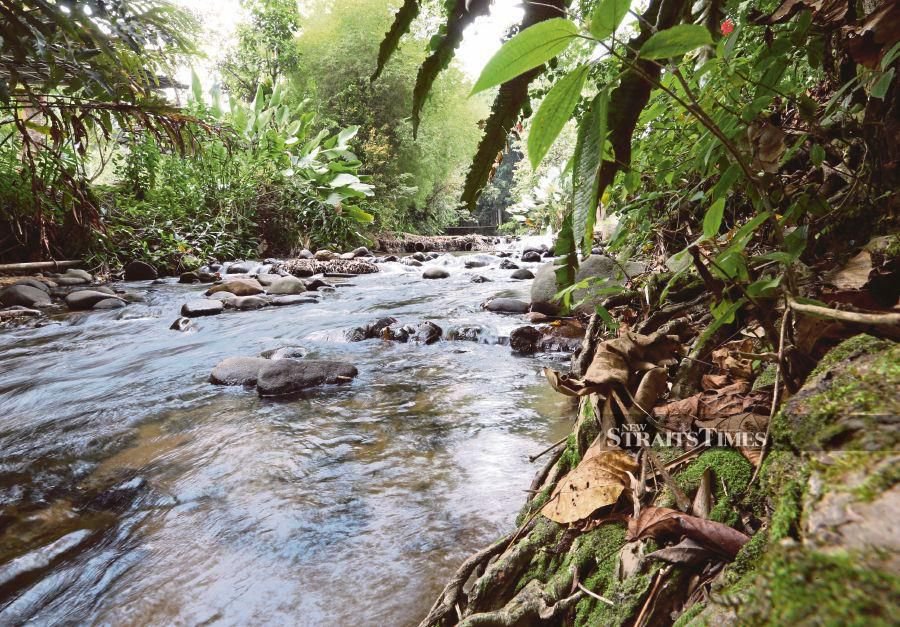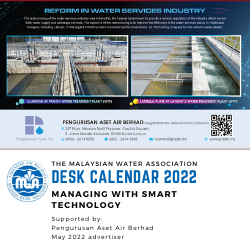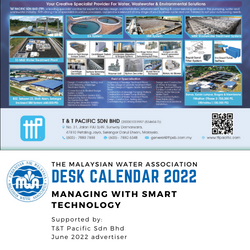
The Academy of Sciences Malaysia (ASM), the country’s science and technology Thought Leader, would like to address the points raised by Wong Ee Lynn in the letter entitled “Groundwater extraction not the answer”(NST, Aug 4 ).
FIRST, the writer alluded that poor management of water catchment areas, water demand and non-revenue water loss are akin to “withdrawing funds from an overdrawn bank account”.
For readers’ information, the amount of groundwater being pumped in the nation is less than three per cent of the national water supply, barely considered an “overdrawn bank account”.
Studies by the Japan International Cooperation Agency in 1982 and local experts show the annual amount of groundwater recharge into the alluvial and hardrock aquifers is 64 billion m³. From this annual recharge, the government plans to pump groundwater sustainably.
The amount of groundwater storage is reported to be 5,000 million cubic m3. A large annual recharge and groundwater storage mean that the groundwater is practically untouched.
SECOND, the writer stated that continuously pumping groundwater can lead to collapsing and sinking of soil, resulting in disasters such as sinkholes, surface cavities, the tilting and cracking of buildings, and flooding. In truth, these incidents happen because of unregulated overpumping of groundwater.
The authorities in affected cities have only recently begun to regulate groundwater development with governance protocols.
Conversely, groundwater is a state resource in Malaysia. With the technical input from the Minerals and Geoscience Department, these states license the amount of groundwater to be withdrawn from aquifers.
Sustainable withdrawal of groundwater can be observed in northern Kelantan, where groundwater has been pumped since the 1930s without any subsidence of the state or the township. In fact, the state water authority monitors the groundwater level and land surface to avoid over-pumping and subsequent land subsidence, as well as intrusion of saline water.
Cavities will occur naturally in areas underlain by limestone. Groundwater experts are fully aware of the hazards of pumping in such areas and take precautions. It is a known fact that in some European Union countries, the main aquifers of groundwater are mainly formed in limestone (or karstic) areas.
Malaysia needs to recognise the value and potential of groundwater as an important water resource. A recent publication by the International Association of Hydrogeologists states that groundwater has always displayed excellent drought resilience and the presence of aquifers provides a “natural solution” for deployment in climate-change adaptation.
In its Strategic Advisory Report to the Government through the National Water Resources Council in 2012, ASM proposed a Groundwater Development Strategy Framework in its Integrated Aquifer Systems Management Study, a subset of ASM’s Integrated Water Resources Management (IWRM) Study.
Under Strategy 8, ASM recommended undertaking a detailed assessment to determine the status of groundwater resources. This included the values, issues and problems related to aquifers, and the technical and/or management solutions and remedies to resolve issues in the short, medium and long terms.
The assessment needs to be done on a systematic basis on the following aquifer systems: riverine alluvial aquifers within a river basin, coastal alluvial aquifers within or across river basins and hard-rock aquifers within and across river basins.
Action plans should be framed to ensure clear targets for groundwater use. The study recommended that groundwater use be expanded to 20 per cent of the public water supply by 2030.
It was also recommended that groundwater be used conjunctively with surface supplies, except in remote areas where no piped surface supply is available.
Sarawak is a good example, where groundwater is being supplied to schools and villages in several districts. In Peninsular Malaysia, 31 Orang Asli villages had requested groundwater supply.
ASM has prepared a report titled, “Transforming the Water Sector: National Integrated Water Resources Management Plan — Strategies and Road Map”, referred to as the National IWRM Plan, which synthesises and consolidates the strategies recommended in thematic study reports to form a plan to assist the government in expediting the implementation of IWRM.
IWRM has been declared a national policy for the sustainable management of water resources since the late 1990s.
ASM reiterates that the central IWRM agenda calls for the nation’s water resources to be best managed at the river basin level either solely or conjunctively for greater efficiency and accountability.
Academy of Sciences Malaysia
Kuala Lumpur
Source : www.nst.com.my







